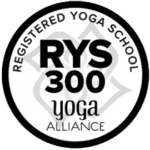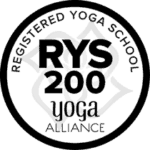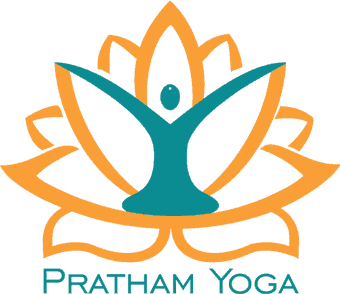Exploring Dandasana: The Staff Pose in Yoga
Yoga, a profound ancient practice, embodies a multitude of asanas that harmonize the mind, body, and soul. Among these, Dandasana, also known as the Staff Pose, stands as a foundational posture revered for its simplicity yet profound benefits. In the heart of yoga training in India, particularly in Rishikesh, a sanctuary for spiritual seekers, Dandasana finds its place in the curriculum of various teacher training programs such as the 100 Hour, 200 Hour, and 300 Hour Yoga Teacher Training in Rishikesh. Let’s delve into the essence of Dandasana, its history, variations, steps, and the array of benefits it offers.

History of Dandasana
The roots of Dandasana trace back to ancient yogic texts like the Hatha Yoga Pradipika and the Yoga Sutras of Patanjali. Its name, ‘Dandasana,’ is derived from the Sanskrit words “Danda” meaning staff or stick, and “Asana” meaning posture. This seated pose has been practiced for centuries, serving as a foundational posture for deeper meditative practices and as a precursor to more advanced asanas.
What is Dandasana?
Dandasana is a fundamental seated pose where the practitioner sits with their legs extended forward, forming a straight line from the tailbone to the heels. The spine remains elongated, shoulders relaxed, and palms resting beside the hips on the ground. This seemingly simple posture demands focus on alignment, engagement, and mindful breathing.
Types of Dandasana
While Dandasana is primarily a singular posture, variations or modifications may exist to suit practitioners with varying abilities or needs. Some practitioners might use props like blocks or straps to aid in achieving the correct alignment and experience the pose’s benefits effectively.
Steps of Dandasana
– Start by sitting on the floor with legs extended forward, feet flexed and active.
– Engage the quadriceps and press the thighs down while lifting through the chest.
– Keep the spine erect, avoiding any rounding or slumping.
– Root the sitting bones firmly into the ground and maintain a neutral pelvis.
– Extend the arms alongside the body, with the palms pressing gently into the ground for support.
– Focus on the breath, inhaling deeply to lengthen the spine and exhaling to relax into the posture.
Benefits of Dandasana
The practice of Dandasana brings forth a multitude of benefits:
Improves Posture
Engaging in regular Dandasana practice serves as a powerful tool for enhancing posture. This pose strengthens the muscles along the spine and the back, facilitating the correction of posture-related issues. As a result, individuals experience increased stability and alignment in their overall posture.
Enhances Flexibility
Dandasana is a key player in promoting flexibility throughout the body. The pose involves a stretching action that targets the hamstrings, calves, and shoulders. By consistently incorporating Dandasana into one’s routine, practitioners notice a gradual improvement in overall body flexibility, leading to increased range of motion.
Stimulates Digestion
The activation of abdominal muscles during Dandasana proves beneficial for digestive health. The pose acts as a gentle massage for the internal organs, promoting better digestion and alleviating discomfort. This digestive stimulation contributes to a healthier gut and improved overall digestive function.
Calms the Mind
Beyond its physical benefits, Dandasana holds therapeutic qualities for the mind. Regular practice promotes a sense of relaxation, effectively reducing stress levels. As the body aligns and muscles engage, practitioners experience a calming effect on the nervous system, fostering mental tranquility and emotional well-being.
Develops Concentration
Dandasana serves as a gateway to mindfulness and concentration. The focused engagement required to maintain the pose cultivates mental discipline and awareness. As practitioners develop the ability to concentrate on the present moment, Dandasana becomes a foundational step towards more advanced practices, including meditation.
What is Dandasana Good For?
Dandasana serves as a gateway to various seated poses and deeper meditative practices. It acts as a preparatory pose for more advanced asanas, providing a solid foundation for practitioners to build upon. Its emphasis on alignment and engagement makes it a valuable tool for understanding the body’s mechanics and fostering body awareness.
Duration of Dandasana
The duration of holding Dandasana may vary depending on individual practice, comfort level, and the practitioner’s experience. Beginners might start with shorter durations, gradually increasing as they gain strength, flexibility, and comfort in the posture.
At Pratham Yoga in Rishikesh, India, our Yoga Teacher Training Courses cater to individuals seeking to deepen their practice and share the transformative power of yoga. The 100-hour, 200-hour, and 300-hour TTCs offer comprehensive teachings on various yoga asanas, including the foundational posture of Dandasana.
100 Hour Yoga Teacher Training in India
The 100 Hour Yoga Teacher Training in India introduces foundational aspects like Dandasana, providing a strong teaching foundation. Participants gain essential knowledge and skills for effective yoga instruction. This program offers a condensed yet thorough initiation into yoga principles. With a focus on key asanas, including Dandasana, it prepares individuals for a transformative teaching experience. Explore the art and science of yoga in this comprehensive training.
200 Hour Yoga Teacher Training in India
Immerse yourself in the 200 Hour Yoga Teacher Training in India, offering an in-depth curriculum on postures, anatomy, philosophy, and teaching methodologies. This comprehensive program enhances your understanding and practice of fundamental asanas like Dandasana. Designed for a more profound exploration, it equips participants with a well-rounded foundation for effective yoga instruction. Delve into the intricacies of yoga philosophy, refine teaching techniques, and deepen your connection with the art and science of yoga. Elevate both your personal practice and teaching skills through this immersive training experience.
300 Hour Yoga Teacher Training in Rishikesh
Dive deep into yoga with the 300 Hour Teacher Training in Rishikesh. This advanced program refines both personal practice and teaching techniques, emphasizing key asanas like Dandasana. Explore advanced teachings in yoga philosophy and methodology, elevating your expertise. Immerse yourself in the transformative experience of Rishikesh for a higher level of mastery in yoga.
Pratham Yoga recognizes the profound impact of Dandasana, the humble Staff Pose, extending beyond its simplicity to provide a myriad of physical, mental, and spiritual benefits. Whether incorporated as a foundational pose in Pratham Yoga teacher training or embraced in daily practice for overall well-being, Dandasana becomes a gateway to holistic wellness and self-discovery.


